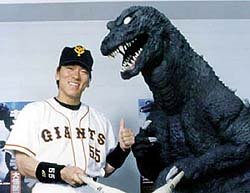To set up the match ups, we're going to set up the American League and National League where the team with the best record plays the team with the worst record, the team with the second best record plays the team with the second worst record, and so on. The team right in the middle gets a by, because no one noticed them.

American League
Rangers vs Twins
Orioles vs Athletics
Red Sox vs Angels
Blue Jays vs Rays
Indians vs White Sox
Royals vs Astros
Mariners vs Yankees
Tigers get a by
National League

Cubs vs Braves
Giants vs Reds
Nationals vs Padres
Dodgers vs Phillies
Marlins vs Brewers
Mets vs DBacks
Cardinals vs Rockies
Pirates get a by
Round 1:
AL:
The Rangers easily handle the Twins as they are outnumbered and clearly out skilled in combat.
The Orioles stand no match for the country's top athletes the Athletics. The birds had no way of completing a strong attack.
A pair of Red Sox couldn't stop the Angels as they just sat in the clouds and watched the sox tumble in the drier.
The Blue Jays were flying around for days trying to find the Rays but were drastically unsuccessful. Maybe if they were still the Devil Rays it would have been a different story.
Much like the Red Sox the White Sox stood no chance to the Indians. Who have are some of the best in combat in the MLB.
No matter how royal they may be, the Royals could not compete with the technology that the Astros had on their side.
The Mariners made quick work of the Yankees would continued to attempt to swim to their boats, but their wallets kept dragging them down.
NL:
A group of baby bears were not able to fend off the Braves things may have been different if they had help from their football companions, the Bears.
The Giants had an easy time seeing the Reds in the fields and easily stomped them out.
Although the Nationals took a lot of pride in their country, but it wasn't enough, the Padres had the lord on their side. The Nationals were all struck by lightning.
Although people from Philadelphia can get very violent, the Dodgers just jumped out of the way, the Phillies eventually got frustrated and began fighting each other.
The Marlins were ready to fight, but the Brewers never showed up. When investing what happened, an associate of the MLB found them all passed out drunk in the brewery.
The Metropolitans (Mets) were really confusing the Diamondbacks early by taking the subway, but eventually the Dbacks found them injected their venom into the Mets.
It was taking millions of years for the Rockies to move so this round is going to the Cardinals.
Round 2:
AL:
Rangers vs Athletics
Angels vs Rays
Indians vs Astros
Mariners vs Tigers
They were able to beat the Orioles with their amazing athleticism but the Rangers use their weapons to take out the Athletics in round 2.
The Rays are unable to use their ultraviolet radiation to cause long term damage to the Angels. The Angels move on to the next round.
Once again the Indians put up a great fight, but the Astros technology is too complex and blew away the tribe.
The Tigers were swimming to the Mariners boats not giving up and leaping aboard. It looked like something out of the Life of Pi. The Tigers beat the Mariners and ate all their fish.
NL:
Braves vs Giants
Padres vs Dodgers
Marlins vs DBacks
Cardinals vs Pirates
With dozens of arrows in their legs the Giants stopped playing games and grow frustrated with the Braves and just stomped them out like they did the Reds.
The Padres had the lord on their side in the first round but the Dodgers could not be hit. The lord eventually had better things to do and the Padres went down.
Did you know that Diamondbacks could swim? That must be why they have a pool in their park. Well they jumped in the water and injected venom into all the Marlins.
The pirate's life was not for the Cardinals as they went out to sea and the Pirates swiped them down with their swords one by one.
Round 3:
AL:
Rangers vs Angels
Astros vs Tigers
The Angels got this far without ever having to fight, but the Rangers were not the most religious people and didn't believe they were real. The Angels never showed up.
The Astros have made it this far with their technology, but the Tigers have found their way into the control area. They take out the engineers behind the controls.
NL:
Giants vs Dodgers
Diamondbacks vs Pirates
The Giants were too big for the Dodgers to dodge this time around. The Giants take the NL West rivalry once again.
The Pirates already having scurvy and drunk from all the rum they have been drinking after the victory over the Cardinals get injected with the Diamondback's venom and go quickly.
Round 4:
AL:
Rangers vs Tigers
The Rangers on their horses cannot outrun the Tigers. Their guns nearly out of ammo, and the Tigers to agile to hit. The Tigers take down the Rangers.
NL:
Giants vs Diamondbacks
Even with all the venom in the Diamondbacks combined the Giants are just too big to be affected by the venom. The Dbacks are very agile and avoid being stomped out for a very long time. This series went all the way to game seven, but the Giants find themselves victorious.
Final Round:
Giants vs Tigers

The Tigers are hungry for blood and the Giants have a lot of it. Quickly avoiding attacks by the Giants, the Tigers are getting tired. Much like the 2012 World Series the Giants easily stomp out the Tigers and are victorious with their pure size and strength.











